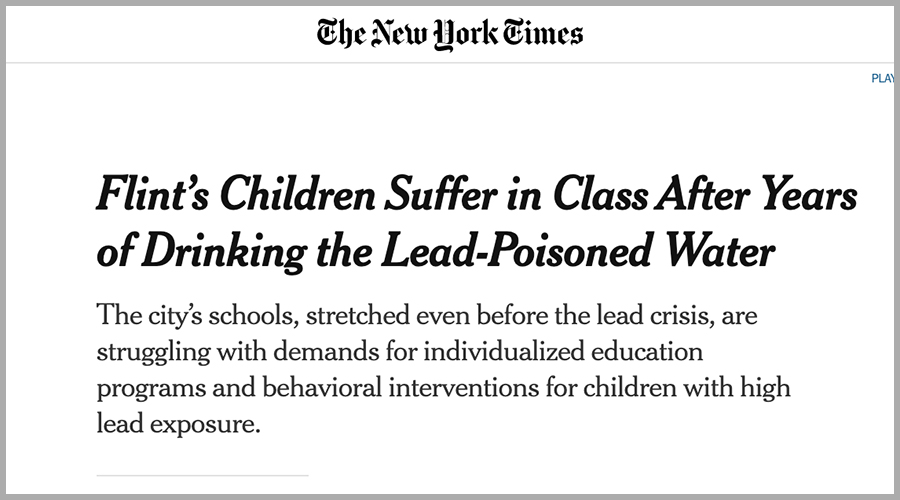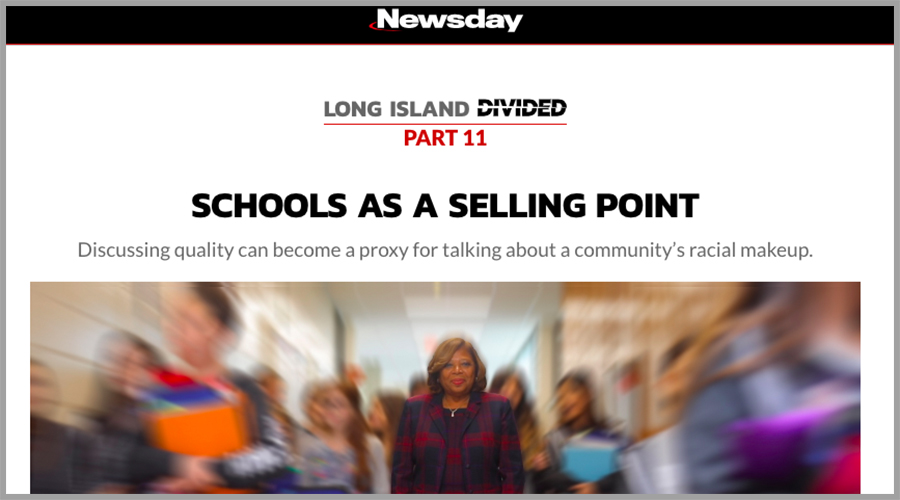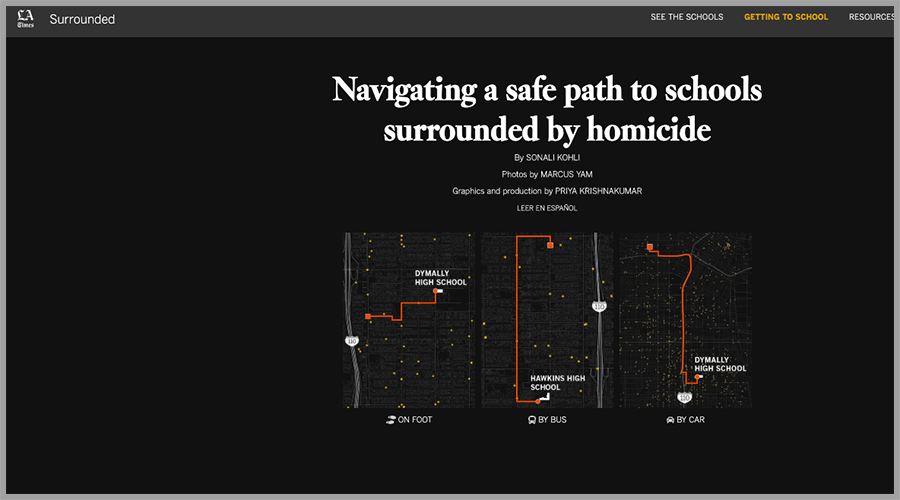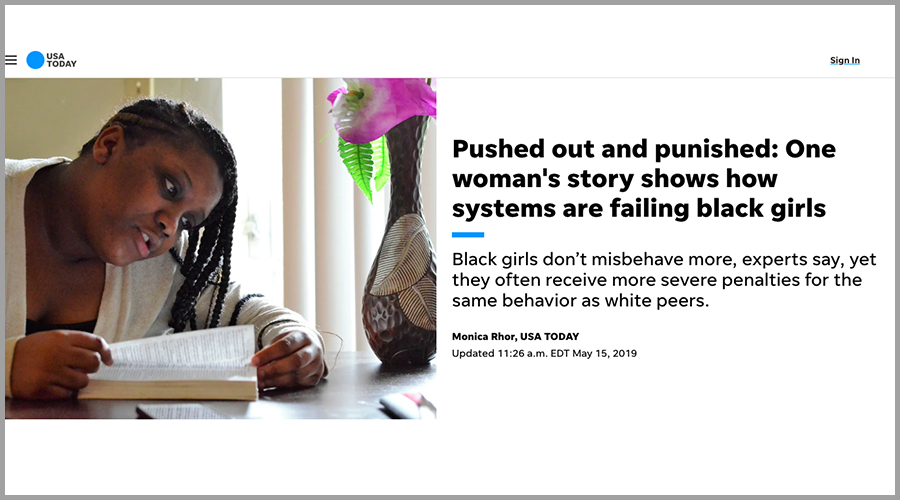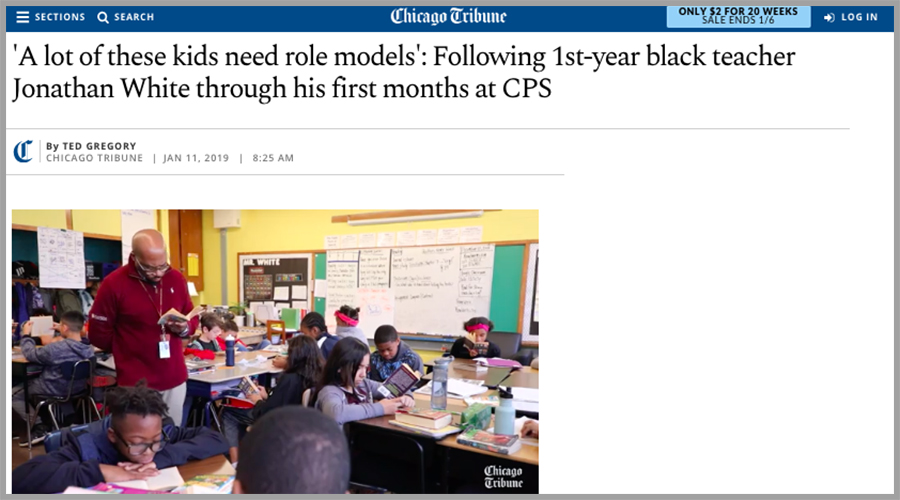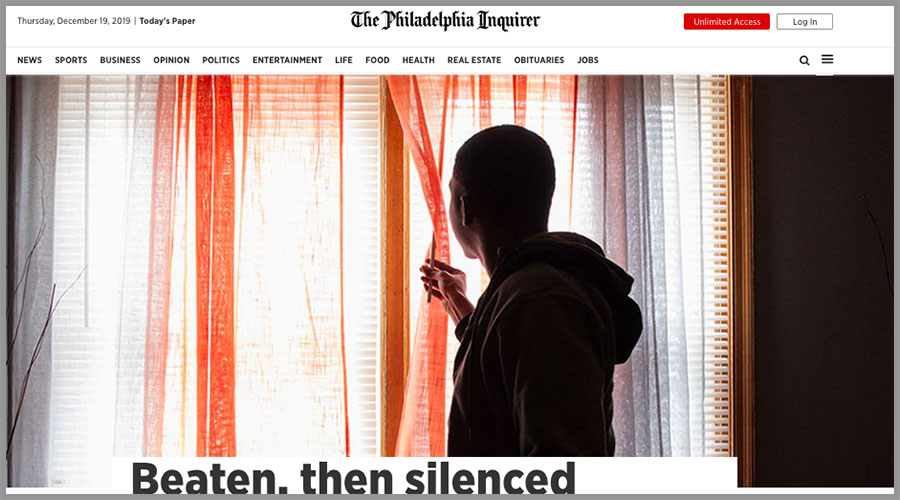A 2019 Education Journalism Jealousy List: 19 Important Articles About Schools We Wish We Had Published Last Year
By Beth Hawkins, Carolyn Phenicie, Laura Fay, Kevin Mahnken, Mark Keierleber, Meghan Gallagher & Taylor Swaak | January 1, 2020
This is the latest roundup in our “Best Of” series, spotlighting top education highlights from 2019. (You can get all the latest news, analysis and essays delivered to your inbox daily by signing up for The 74 Newsletter)
For years now, we’ve been jealous of Bloomberg Businessweek’s “Jealousy List” — the outlet’s regular tribute to the best news, profiles and scoops published by competitors. (Be sure to check out its colorful 2019 edition.) And for a second straight year, we’re paying the ultimate compliment in stealing the concept outright, applying it this time to the universe of education journalism. There were so many important, inspiring and incisive features published last year, features and scoops that changed the way we look at education policy and practice.
Below (in no particular order) are 19 important articles we wish we had published in 2019. Hope you’ll help us revive them this morning and share them to readers who would appreciate:
The New York Times — Flint’s Children Suffer in Class After Years of Drinking the Lead-Poisoned Water: In November, The New York Times’s Erica Green documented the unfathomable level of unmet need among the 30,000 Flint, Michigan, schoolchildren exposed to lead in their drinking and bathing water. The subsequent increase in the number of children diagnosed with neurological or behavioral problems is threatening to overwhelm the city’s education system, deep in crisis from a student exodus that has reduced enrollment from 50,000 to 4,500 since the 1960s. With teacher starting pay hovering around $35,000 a year, a special education identification rate of 28 percent and no cavalry on the horizon, Green tells us, suspensions, expulsions and dropouts are on the rise. Read Green’s article.
Newsday — Long Island Divided: Schools as a Selling Point: Following an eye-opening three-year investigation, a team at Newsday uncovered how New York real estate brokers perpetuate residential segregation across Long Island, one of America’s most racially segregated suburbs. In Part 11 of the must-read package, reporter Olivia Winslow investigates how real estate agents “sell schools as much as houses,” recommending to house hunters which school districts they should buy into — and which they should avoid. The story is a prime example of how housing policy is de facto education policy, and how discussions of school quality can become a proxy for race. Read Winslow’s report on schools, as well as the 12 other chapters in the “Long Island Divided” project.
Los Angeles Times — Navigating a Safe Path to Schools Surrounded by Homicide: Avoiding gangs, gunfire and aggressive dogs while navigating catcalls, bus schedules and former crime scenes are all part of a day in the life of these Los Angeles high school students. Sonali Kohli of the Los Angeles Times documents three students’ daily commutes to school, showing how violence pervades their childhoods. While much of the national attention has been focused on school shootings, which are quite rare, Kohli offers a close-up of how everyday violence and trauma affects students, who frequently hear gunshots and pass memorials to fallen friends on the way to school. Read Kohli’s article — and the rest of her series on neighborhood violence in Los Angeles.
USA Today — Pushed Out and Punished: One Woman’s Story Shows How Systems Are Failing Black Girls: “African-American girls are often unfairly viewed as hypersexualized, more dangerous than their peers and in need of more control. Educators penalize them for subjective infractions such as ‘being distracting’ or ‘having an attitude.’ They are twice as likely as black boys to be disciplined for ‘disobedience.’” USA Today’s Monica Rhor compiles the research on the disparities confronting black girls who, in addition to the aforementioned biases, are “adultified” at a young age and at significant risk of dropping out of school or being held back. The data is damning — but not so heart-rending as learning how the institutionalized racism affected C’alra Bradley, a young Texas woman with a tragic backstory. Read Rhor’s article.
The Chicago Tribune — ‘A Lot of These Kids Need Role Models’: Following 1st-Year Black Teacher Jonathan White Through His First Months at CPS: There’s no ingenious, groundbreaking premise behind this piece. It’s just an intimate, closely reported, unshakable profile of a black male teacher in the Chicago Public Schools, where fewer than 700 out of 21,000 instructors are black men. Tribune reporter Ted Gregory followed Jonathan White, a mid-career former graphic designer, through his first few months teaching sixth grade in a racially mixed classroom. The story touches on themes that will be familiar to education observers — the scarcity of teachers of color and the mounting research pointing to their value to black students — but it succeeds most as a multi-generational portrait of black men striving to lift up their families, their communities and other people’s kids. Read Gregory’s article.
The Boston Globe — The Valedictorians Project: The idea was genius, and so was the execution. A Boston Globe team spearheaded by Malcolm Gay, Eric Moskowitz and Meghan E. Irons contacted almost all of the city’s 113 valedictorians from a three-year span to find out whether the reality of their futures was as shiny as the promise. What they found was sobering. Upon graduating from high school, two dozen said they wanted to become doctors, but none did. More than a decade later, 40 percent earn less than $50,000, four have survived homelessness and one prison. Using an interactive layout interspersed with intimate videos, the Globe’s stories paint a vivid picture of the depth of the inequities between Boston’s students and their suburban neighbors, as well as the seemingly insurmountable obstacles those multiple disparities create. Read more about the project.
THE CITY & Chalkbeat — A Reading ‘Crisis’: Why Some New York City Parents Created a School for Dyslexic Students: Amid this reporting on the vast special education landscape, THE CITY and Chalkbeat produced a standout piece in September that homed in on the plight of a subset of students: learners with dyslexia. Writers Alex Zimmerman and Yoav Gonen used the recent opening of a school for dyslexic students on Staten Island — the only public school of its kind in the state, spearheaded by desperate parents — to exemplify the district’s failure to cater to these students’ needs in traditional public school settings. It also tied in the broader “reading wars,” and how inconsistencies in how schools teach children to read has only exacerbated the situation. Read Zimmerman and Gonen’s article.
The Philadelphia Inquirer — Beaten, Then Silenced: Reporter Lisa Gartner investigates a troubling pattern of abuse at the Glen Mills Schools, a prestigious reform school for boys in suburban Philadelphia. Serious violence at the school has been an open secret for decades, with school staff using egregious tactics — including threats — to keep abuse under wraps. After the newspaper investigation was published, the state’s Department of Human Services revoked the school’s license to operate for “gross incompetence, negligence and misconduct.” Read Gartner’s article.
U.S. News & World Report — The Higher Education Apocalypse: The higher education apocalypse is coming, U.S. News’s Lauren Camera warns. The sudden closure of dubious for-profit colleges gets the most ink, but an increasing number of small, nonprofit liberal arts colleges are closing, and even legacy research institutions are contemplating a future with fewer students. Half of all colleges in the country could close or go bankrupt in the next decade, researchers say. The culprit? A lower birth rate spurred by the Great Recession means fewer future students. Camera centers the story in New England, ground zero for this coming apocalypse, with its glut of colleges and nationally low birth rates. Read Camera’s article.
ProPublica — An Unseen Victim of the College Admissions Scandal: The High School Tennis Champion Aced Out by a Billionaire Family: If, like some, you followed the 2018 college admissions scandal with a mix of sickness and schadenfreude, you might be familiar with some of the players involved: Rick Singer, the private “admissions consultant” who concocted a scheme to bribe college coaches and SAT proctors to get rich kids into Yale, Stanford and Wake Forest; Lori Laughlin, the former Full House star who allegedly paid half a million dollars to win her daughters a place at USC; and Morrie Tobin, the fraudster-turned-informant whose squealing got everyone caught. But you probably haven’t met Adam Langevin. He’s a former high school tennis star who watched a less-gifted classmate get recruited to Georgetown through Singer’s scam. In telling his story, ProPublica’s Doris Burke and Daniel Golden masterfully bring the public corruption of Varsity Blues to the human level. Read Burke and Golden’s article.
The Atlantic — “When the Culture War Comes for the Kids”: This lengthy essay by The Atlantic’s George Packer was probably the most disputed work of education commentary last year. Exquisitely and tendentiously crafted, it tells the story of Packer’s discomfort with the progressivism on offer at his son’s sought-after Brooklyn elementary school, where gender-neutral bathrooms were instituted with little community input and educators seemed to encourage parents to opt their children out of state testing. For Packer, the heated PTA meetings became a microcosm for a dangerous new orthodoxy emerging in the late-Obama era, nourished by identity politics and petty power struggles. Critics took aim at the piece for caricaturing the goals of New York schools Chancellor Richard Carranza, and it’s fair to point out that the school in question is wildly atypical of the rest of the district. But it’s indisputably, and predictably, a fantastic piece of writing. Read Packer’s piece.
The Washington Post — This Trail-Blazing Suburb Has Tried for 60 Years to Tackle Race. What If Trying Isn’t Enough?: “The story of Shaker Heights shows how moving kids of different races into the same building isn’t the same as producing equal outcomes,” Laura Meckler writes. Decades of integration efforts in this utopian town haven’t meant equal results for black and white students, and small dust-ups over race linger. Meckler, a Shaker Heights native, also weaves in her own experience growing up in the town. Read Meckler’s article.
The New York Times — Bernice Sandler, ‘Godmother of Title IX,’ Dies at 90: An obituary might seem like an odd choice for a jealousy list, but it’s a beautifully written tribute to a woman who made an incredible difference to the education of American women and girls. Katharine Seelye’s piece details Sandler’s work to get Title IX passed, from opportunities she was barred from as a child and university professor, to her work with congressional leaders to pass the legislation, to her efforts to apply it more broadly. “Title IX turned out to be the legislative equivalent of a Swiss Army knife,” a friend said. “It opened up opportunities in so many areas we didn’t foresee, and [Sandler] laid the essential groundwork for it all.” Read Seelye’s article.
THE CITY — Surge of Complaints by Parents of Special Education Students Sparks ‘Crisis’: New York City’s massive special education system has long been besieged by criticism for failing to evaluate and provide timely, individualized supports to tens of thousands of students. But local outlet THE CITY further exposed the “crisis” in May, with reporter Yoav Gonen conducting an external review and analysis of a state-commissioned report to reveal that special education complaints have skyrocketed in recent years — jumping 51 percent between the 2014-15 and 2017-18 school years alone. This article also appears to be the tip-off of a diligent and damning reporting collaboration between THE CITY and Chalkbeat’s New York bureau this year, which has unveiled blown legal deadlines to help students with disabilities and a severely backlogged complaint system, among other findings. Read Gonen’s article.
The Marshall Project — First Big Scoop: Student Journalists Expose High School’s Use of Prison Labor: In June, high school senior Spencer Cliche and the staff at The Graphic, the student newspaper of Amherst Regional High School in Amherst, Massachusetts, published an investigation revealing that their school used prison labor to reupholster school theater seats on the cheap. Eli Hager’s feature in The Marshall Project both celebrates the student journalists who uncovered the practice and examines the ethics of using inmates, who are sometimes paid less than a dollar an hour, to cover gaps in education funding. Within a day of the story’s publication, the Amherst-Pelham Regional School District superintendent wrote to parents to say the district would not use prison labor in the future. As Hager noted, the students’ reporting has the “real-world impact that many adult journalists only dream of.” Read Hager’s article.
The Boston Globe — For Low-Income Students, the Suburbs Are No Sure Path to College: They go to a high-performing school in the suburbs, get good grades, are readily accepted to top colleges and seem destined for greatness. But then the challenges sparked by socioeconomic status undercut their dreams. James Vaznis and Sarah Carr dive into the suburban school conundrum, where hugely successful districts are nevertheless ill-equipped to address wide-ranging inequalities. The Boston Globe illuminates stark data with a robust analysis and the voices of those directly affected; reading this story, we walked away even more committed to check in on students from schools where disparities are less expected. Read Vaznis and Carr’s article.
ProPublica & Chicago Tribune — The Quiet Rooms: A devastating report by ProPublica Illinois and the Chicago Tribune about the use of school seclusion rooms across Illinois: “In the nearly 50,000 pages of reports reporters reviewed about Illinois students in seclusion, school workers often keep watch over children who are clearly in distress. They dutifully document kids urinating and spitting in fear or anger and then being ordered to wipe the walls clean and mop the floors.” In addition to examining public records, a team of reporters interviewed more than 120 parents, students and school officials about seclusion, which was often used — in violation of state law — to punish students for minor infractions. The investigation had an almost immediate impact, sparking an emergency ban on isolated timeouts and leading officials to promise reforms to seclusion and restraint practices in schools. Read the piece by Jennifer Smith Richards, Jodi S. Cohen and Lakeidra Chavis, with photos by Zbigniew Bzdak.
The Washington Post — ‘You Understand That You Might Have to Shoot a Student?’: As school districts discuss whether to arm teachers in the wake of mass school shootings, reporter Kyle Swenson explores how the decision weighs on educators who sign up. Set in politically conservative Vincent, Ohio, the story features one district’s efforts to implement the nerve-racking decision to place guns in the hands of teachers. Though arming teachers has become a political flashpoint nationally, the story offers a compelling inside look at how one school district implemented the controversial policy. Read Swenson’s article.
The New York Times — 114,000 Students in N.Y.C. Are Homeless. These Two Let Us Into Their Lives: New York City’s homeless student population is enough to fill Yankee Stadium twice over — but reporting on this group of 114,000 at-risk students, or 1 in 10 of the district’s 1.1 million kids, can often be simplified to data points and annual reports. Eliza Shapiro from The New York Times took a more humanistic approach, narrating a day in the life of a homeless boy and girl with the help of photographer Brittainy Newman in November. The resulting photo essay, which follows the two students from the moment they wake up until the sun sets, puts a face to the instability and emotional trauma — but also the resilience and hope — of homeless students districtwide. Read Shapiro and Newman’s article.
Get stories like these delivered straight to your inbox. Sign up for The 74 Newsletter

